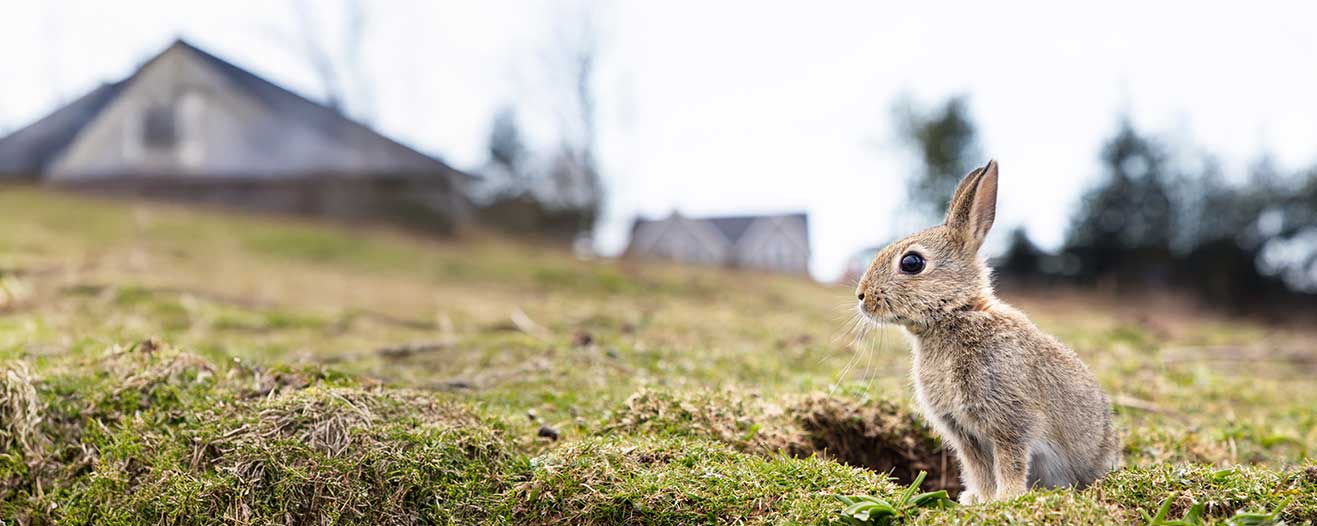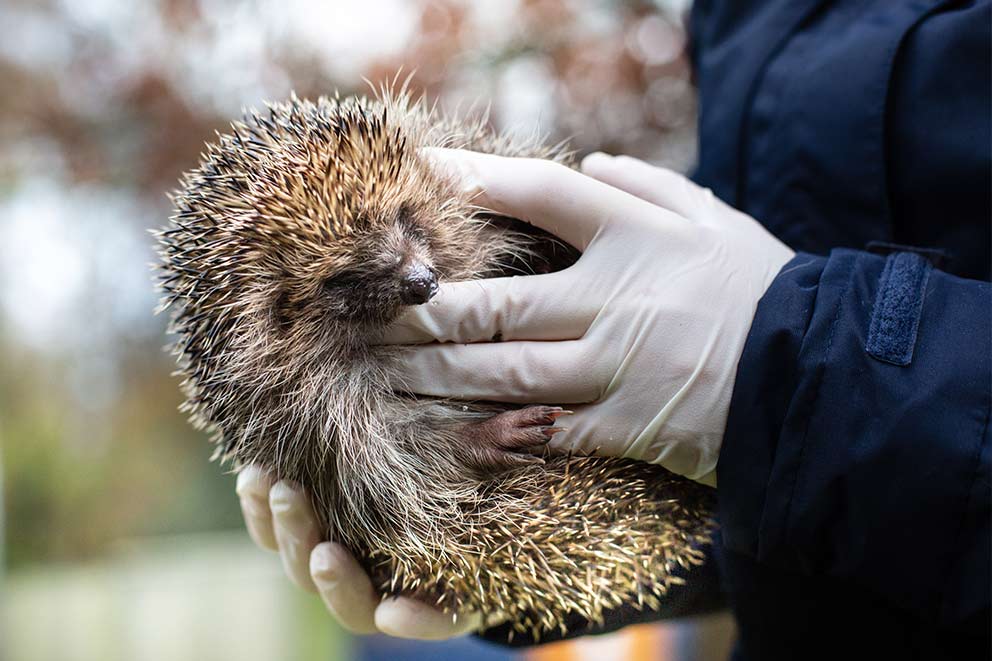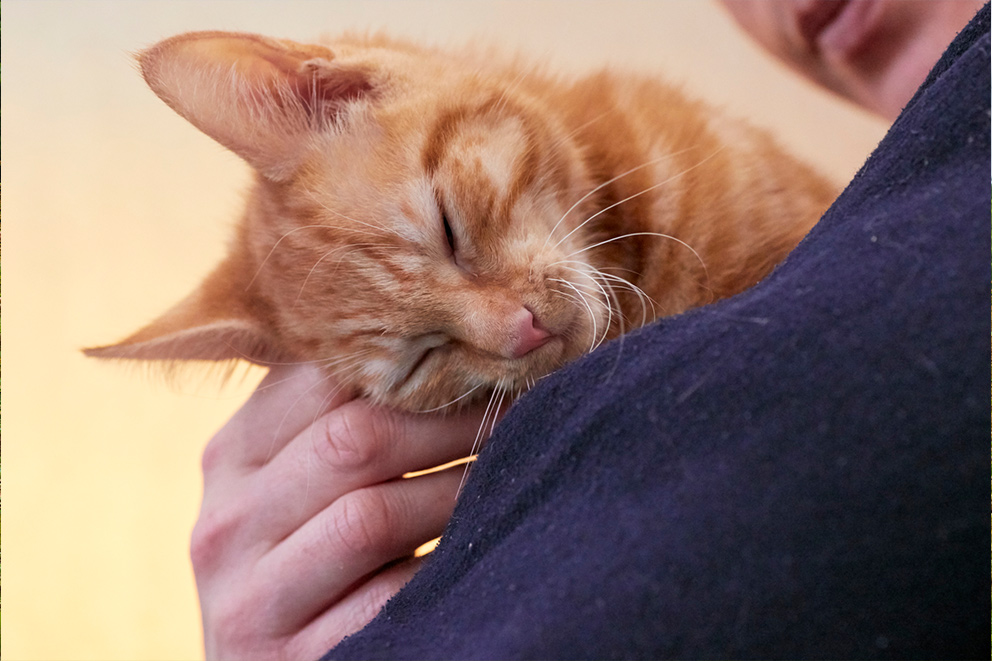Pet owners
We love and care for our pets, and financial worries when it comes to this appear to be slowly declining.
Almost 8 in 10 children own a pet (76%), as do over half of the adult population (54%).

Can you put a price on loving our pets?
While most adults (74%) say pet care is more expensive now than a year ago, the figure has actually been dropping over the past two years. People in the East Midlands feel the cost most (85%), while Londoners seem less affected (51%).
Fewer pet owners have changed their behaviour in the past 12 months as a result of financial pressures, with 34% admitting to doing so, compared to 36% last year and 38% in 2023. Some of the actions that these pet owners have taken are: buying pet food less often or changing to a cheaper brand (10%); cutting back on their food or other necessities to feed or care for their pet(s) (10%); stopping going to the vet (4%); or having their pet(s) put to sleep (1%).
The cost of caring
Pet owners are increasingly worried about being able to afford vet bills (52%) and pet insurance (33%), compared to last year. However, other concerns, such as paying for bedding and grooming (20%), food (19%) and training (23%), are easing. This suggests that while the cost-of-living crisis is still affecting pet care, its impact may be lessening. Consistent with previous years, affording vet bills is the main financial worry among pet owners, particularly for those aged 45–54 (60%). But despite financial worries, responsible pet care is on the rise as 68% now vaccinate their pets annually (up 5% from last year), 71% take them for regular check-ups, and 89% are registered with a vet.
Figure 1: Pet affordability worries - 2024 vs 2025
Young owners, heavy costs
Younger generations are feeling the greatest financial strain of pet ownership. Sixty percent of those aged 16–17 own a pet, and this is the age group most worried about affording pet food (32%), insurance (46%), and heating or lighting enclosures (23%). Meanwhile, 18–24 year-olds are most concerned about covering essential welfare needs (34%) and additional requirements (40%) for their pets. This highlights the unique financial pressures faced by young pet owners.
Although 14% of pet owners have experienced regret over getting a pet, this feeling is beginning to decline. Interestingly, financial concerns are no longer the main reason for this regret. In 2025, behavioural issues in pets (25%) have become the top cause, reflecting a shift in the challenges pet owners face.
Breeding dogs for a certain look: the public is divided
A little under half the public (45%) see ending harmful dog breeding practices (including those that cause genetic diseases) as one of the most important animal welfare issues to address. Most people agree it’s unacceptable to breed animals with genetic health issues (84%) or extreme body shapes (85%), though views vary by region. Londoners are least likely to find these breeding practices unacceptable, with 60% expressing concern over genetic health problems and 63% over extreme body shapes. Support is strongest in Yorkshire and the Humber, the East of England, and Wales, where 89% of adults across these regions agree that breeding animals with genetic health problems is unacceptable. In Wales, this figure rises to 91% for breeding animals with extreme body shapes.
There is also a generational divide on this issue as over 90% of those aged over 55 say these practices are unacceptable, compared to around 70% of 18–34 year olds. Children are more likely to tolerate animals being bred for their looks, although well over half of 7–15 year olds (60%) say it’s never OK to buy pets just because we like the way they look, while two-thirds (66%) think it’s never OK to change the way pets look because of a new trend.
Opposing harm, but fuelling demand
In line with a majority opposition to harmful dog breeding, Google searches for breeds with genetic health problems are decreasing. From April 2024 to March 2025 there were almost 1.2 million searches for puppies for sale and approximately 17% of these (192,200) were for bulldog, dachshund and French bulldog puppies – a decrease of 3% from the previous year. These breeds have genetic health problems and can suffer from issues such as difficulty breathing and poor back and hip mobility. Despite an overall decrease in searches for these breeds, searches for ‘bulldog puppies for sale’ increased by 10% in the period April 2024 to March 2025, compared to the same period the year before.
Seeking advice, one click at a time
Most pet owners (86%) actively seek advice on how to care for their pets, with vets remaining the top choice (61%), up 4% from 2024. However, social media is at an all-time high as a source of advice (14%), especially among younger adults aged 18–24 (28%) and 25-34 (29%). Meanwhile, those aged 45–54 are most likely to turn to the internet in general (47%), highlighting generational differences in where people look for pet care guidance.
Figure 2: Sources of advice for pet owners
Kindness Index Reality Check: Pet owner
The results
Looking at pet owners, we set the Reality Check goal as ‘regard for and recognition of pet welfare’, which was the same as 2024 so we could compare against a baseline. Our findings from the Animal Kindness Index survey resulted in a score of 4.3 out of 5 for this goal, while our analysis of real-life data scored 3.8 out of 5. These scores were the same as in 2024.
From this, we can see that there are gaps in our understanding of how we are kind to our pets against how we demonstrate kindness.
What we found out
Our data analysis revealed positive insights. Despite only 56% of adults believing that dressing pets up for fashion or fun rather than warmth is unacceptable, a notable 84% of respondents believe breeding animals with health issues is wrong. Brachycephalic (flat-faced) dog breeds and dachshunds make up just 0.5% of the UK dog population, while about 10% of UK cats – mainly British shorthairs, Persians, and Scottish folds – are brachycephalic, an increase from 2024. Although registration data doesn’t capture all pets, those with genetic health issues remain a small proportion of the UK’s pet population.
Interest in these breeds persists, however. Despite a 15% decline in searches from 2024 (April 2023 to March 2024) to 2025 (April 2024 to March 2025), there were still nearly 200,000 searches for bulldog, dachshund, and French bulldog puppies in 2025. Labrador and German shepherd puppies also saw high search volumes at 187,900 and 143,700, respectively, and there were 128,500 searches specifically for ‘Dachshund puppies for sale’. This suggests a continuing demand for breeds known to have genetic health problems.
The Animal Kindness Index shows that 79% of UK pet owners meet basic care standards. Booster vaccinations are maintained by 80% of dog owners, 65% of cat owners, and 55% of rabbit owners. Additionally, 75% of UK pets are neutered or spayed, and this figure broadly aligns with PDSA PAW Report neutering/spaying estimates of 68% for dogs, 87% for cats, and 61% for rabbits (Footnote 1).
Pet owners analysis method
-
For pet owners, our attitudes analysis looked at:
- the recognition of emotional experiences in companion animals (91% recognised this);
- basic care maintenance (an average of 79% of pet owners maintain basic care for their pets);
- concern over breeding pets with genetic health problems (84% believe this is wrong);
- dressing up pets for fun (56% believe this is unacceptable).
-
As a reality check, we looked at:
- basic care maintenance from the 2023 PDSA PAW report (Footnote 2);
- Kennel Club 2024 breed registration statistics for breeds with genetic health problems (brachycephalics and dachshunds) (Footnote 3);
- Google searches for Bulldog, Dachshund, French Bulldog puppies for sale;
- the available government guidance regarding responsible pet ownership and breeding.
This analysis highlighted a promising outlook on the attitudes of the public towards companion animals. There's strong concern about breeding animals with health problems, however, continued demand for these breeds presents an important gap between attitudes and behaviour.
Citizens
Year on year, we continue to be a nation of animal lovers. This year, almost 9/10 children (89%) and 7/10 adults (71%) describe themselves as an animal lover. For adults, this is a 2% increase on the three previous years; for children and young people, it’s a 4% increase.
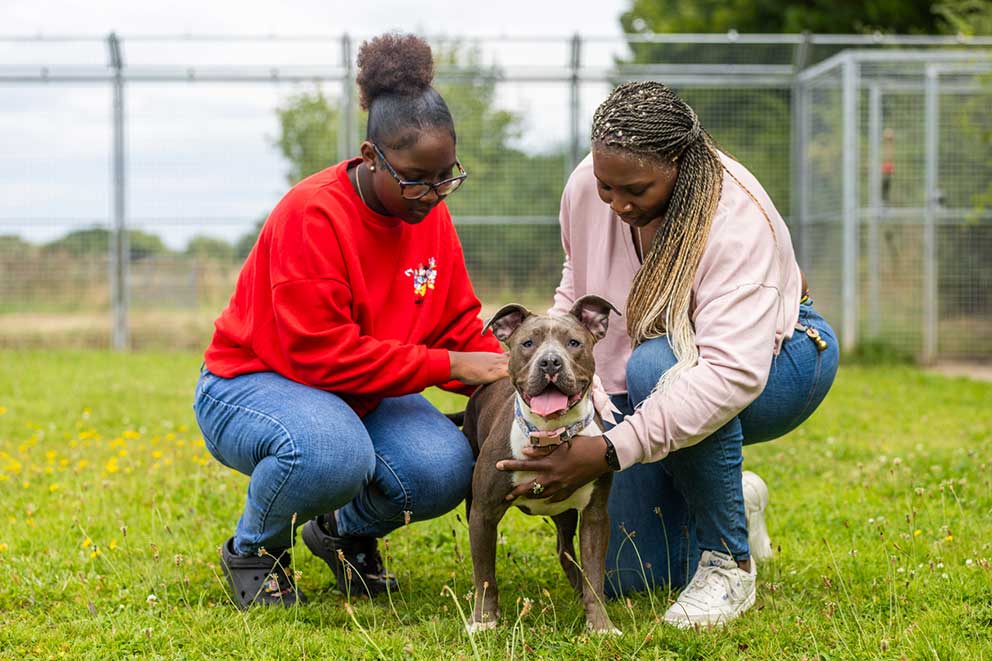
A nation of animal lovers
While older generations are more likely to identify as animal lovers, younger age groups are catching up, with 63% of 18–24 year olds now identifying as animal lovers – up from 57% in 2024. Regionally, adults in the East of England and Wales are the most likely to say they’re animal lovers (76%), while Londoners are the least likely (61%). Among children and young people, Wales stands out, with 94% identifying as animal lovers, whereas this sentiment was lowest in Yorkshire and the Humber (84%).
Across the issues we surveyed, animal welfare has also risen to become the third most important issue for adults (33%), behind mental health (38%) and physical health (34%), after coming in fifth place in 2024. This rise has seen animal welfare regain its position as one of the top three important causes for the public, as it was in 2022 and 2023. Interestingly, animal welfare is the most important cause for those who live in the West Midlands (39%) and the South East (37%). Among children and young people, 59% see caring for all animals as most important, second only to ensuring people are happy and healthy (60%).
Animal welfare has also risen to become the third most important issue for adults (33%), behind mental health (38%) and physical health (34%), after coming in fifth place in 2024. This rise has seen animal welfare regain its position as one of the top three important causes for the public, as it was in 2022 and 2023. Interestingly, animal welfare was the most important cause for those who live in the West Midlands (39%) and the South East (37%). Among children and young people, 59% see caring for animals as important, second only to ensuring people are happy and healthy (60%).
Figure 3: Are you an animal lover? (by age)
We love animals, but are we doing enough for them?
Animal welfare is a shared responsibility. More than three-quarters of adults (77%) believe that individuals should be responsible for animal welfare – and with 80% of adults taking action to help animals in the past year, people are already doing their bit. From simple acts such as donating to animal charities or buying a product from an animal charity (32%) and sharing missing pet posts (17%), to bigger lifestyle changes such as reducing meat consumption (21%), people are making a difference.
Children and young people are just as active, with 86% helping animals – most commonly by feeding the birds (54%), asking owners before stroking their dogs (46%), and picking up litter (40%) so animals don’t get hurt or trapped (40%).
Often overlooked, but always sentient
While our love for animals is growing, our understanding of their sentience (their ability to feel emotions such as joy and fear) remains inconsistent. Dogs are seen as the most clearly sentient animals, with 94% of people recognising their ability to feel emotions, which is an increase from last year. However, perceptions of sentience in other animals have either stayed the same or declined.
While the statistics for chicken (72%) and carp (44%) remain the same as in 2024, the public is less likely than last year to think that jellyfish, lobsters, rats, bees and snakes are sentient. New for 2025, 85% of people view parrots as sentient, alongside 63% for octopuses and 34% for spiders.
Interestingly, animals who are more often seen interacting with humans, such as dogs, parrots and chickens, are considered sentient more often than invertebrates such as sea anemones (16%) and jellyfish (22%), even though research increasingly shows such creatures experience emotions like pain and stress.
Figure 4: Is this animal sentient?
Growing support for Firework Control Zones
Firework Control Zones – designated areas where fireworks are banned to protect animals and vulnerable individuals – have strong public backing, with 81% of people across the UK supporting them. Support is particularly high in Scotland (86%), where local authorities are implementing these zones under the Fireworks and Pyrotechnic Articles (Scotland) Act 2022. Support for these zones is also strong in England (81%), Wales (83%) and Northern Ireland (83%).
Despite this, only 22% of people see firework controls as a top animal welfare issue. While 35% of adults have avoided private fireworks displays, and 15% of young people have skipped fireworks parties to protect animals, fireworks still remain a popular tradition despite their stressful effects on animals.
Kindness Index Reality Check: Citizen
The results
To measure the kindness of citizens, we focused on animal sentience and set the goal as ‘animal sentience is recognised and actions taken by the public to support this’. Our findings from the Animal Kindness Index 2025 survey resulted in an ‘attitudes’ score of 3.4 out of 5 for this goal, while our analysis of real life data scored 3 out of 5. We have seen an increase in attitudes and real life behaviour from 2024, with these scoring 3/5 and 3.3/5, respectively, last year.
What we found out
Overall, public attitudes and behaviours around animal welfare are largely aligned, although some inconsistencies remain. While belief and action are closely linked, more awareness and proactive support – especially around animal sentience – are still needed.
The Animal Kindness Index shows that 54% of people oppose using animals in entertainment, which is unchanged from 2024. Yet, viewership of I’m a Celebrity… Get Me Out of Here! rose 3% in the same period, revealing a gap between values and actions. Encouragingly, 71% of people now identify as animal lovers, while volunteer numbers have risen by 8% since 2023. However, donations to UK animal charities fell by 13.6%, underscoring the need to re-engage public financial support.
Citizen analysis method
-
For citizens, our attitudes analysis looked at:
- the recognition of emotional experiences in animals (average of 53%);
- identifying as an animal lover (71%);
- animal welfare as a priority and an important cause to address (59%);
- the perceived acceptability of using animals in entertainment shows (54% view this as unacceptable).
-
As a reality check for citizens, we looked at:
- viewing figures and Ofcom complaints for I’m a Celebrity… Get Me Out of Here!;
- interest in and attendance at horse and greyhound racing events;
- charitable investments;
- RSPCA volunteer numbers.
These scores are relatively average, compared to other areas of the Animal Kindness Index. However, animal welfare was ranked as the third most important cause, which provides a promising outlook for the future of animal welfare.
Consumers
Fewer people are taking steps to change their dietary and buying habits to support animal welfare.
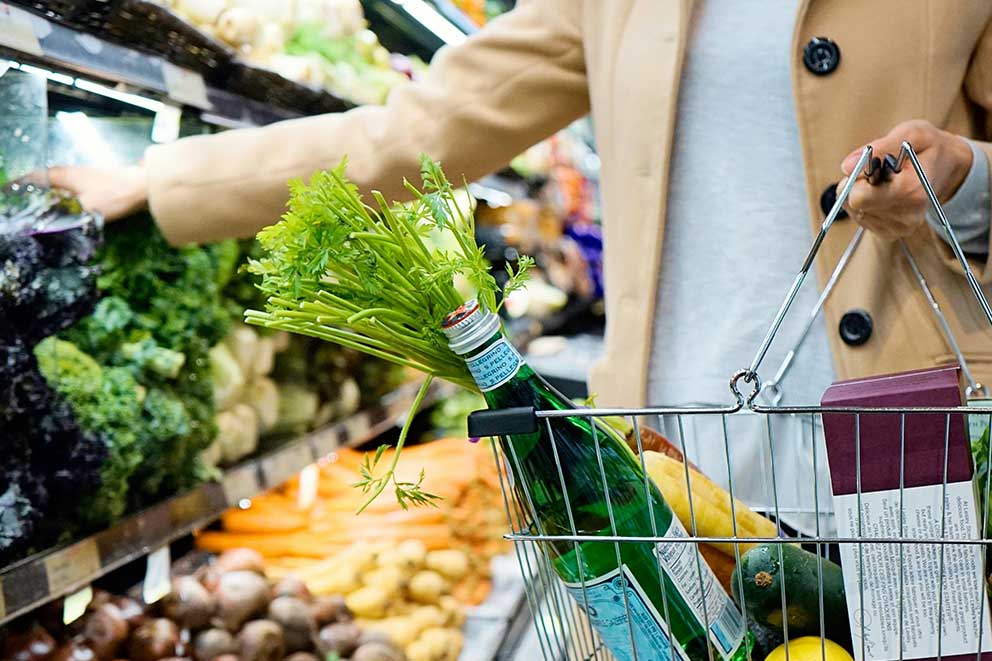
Farming
Consistent with previous years’ results, 4 in 10 (40%) believe that intensive farming is one of the most important issues for the RSPCA to address. This was most common for people in the South West (45%) and West Midlands (44%), and those aged 55–64 (44%).
Purchasing habits
In 2025 fewer people are factoring in animal welfare when making decisions about what to buy. Only 29% have reduced the amount of animal products they eat, and just 24% have adjusted their buying habits due to concerns for animals – both figures are down slightly from 2024 when the scores were 31% and 25%, respectively. Those who live in the South West are the most likely to have changed their behaviour (36% and 29%). This marks the second consecutive year in which animal welfare has played a declining role in consumer decisions across the country.
Figure 5: Purchasing patterns due to animal welfare concerns
What do we eat and how do we choose it?
In 2025, 68% of adults identify as meat eaters, with 16% describing themselves as ‘flexitarians’. Interestingly, there has been a notable increase in the number of 18–24 year olds (57% in 2024 to 65% in 2025) and 25-34 year olds (62% in 2024 and 68% in 2025) identifying as meat eaters. Among children, 95% eat dairy and 94% eat meat.
Two-thirds of adults (67%) report sometimes or always purchasing higher welfare meat, eggs, or dairy, though this is a slight decrease in 2024. Similarly, fewer people are checking labels to learn how animals are farmed or kept (58% in 2025, down from 62% in 2024). However, 38% of adults are now buying plant-based alternatives to dairy, eggs and meat. It’s mainly people who consume vegetarian (82%), vegan (80%) and pescatarian (79%) diets who are driving this behaviour, along with 24% of those who identify as meat-eaters.
Figure 6: Consumer actions that support farmed animal welfare
Willingness to pay for ethics
The percentage of non-vegans willing to pay more for products that explicitly state ethical practices, such as not using cages, has remained stable since 2023. However, there has been a notable decline in the number of people willing to pay more for meat from animals who have been stunned before slaughter, with this figure dropping to 46% in 2025 (56% in 2022) – marking an all-time low.
Kindness Index Reality Check: Consumer
The results
For consumers, we drew on our own campaigns and set the goal as ‘Eat Less, Eat Better’. Our findings from the Animal Kindness Index survey resulted in an ‘attitudes’ score of 3.7 out of 5 for this goal, and our analysis of real life data scored 1.5 out of 5. Attitudes have decreased compared to last year (4/5 in 2024), however, real life consumer behaviour has stayed the same with a score of 1.5/5.
What we found out
The consumer reality check reveals a troubling gap between values and actions around farmed animal welfare. While 58% of people say they check meat and dairy labels for welfare or environmental reasons, only 20% bought higher welfare products in the past year. This highlights an urgent need to better align consumer behaviour with ethical concerns.
Currently, only 12% of UK farmed animals are raised under RSPCA Assured standards – as part of our strategic ambition, we aim to raise this to 50% by 2030. Our farmed animal welfare standards – among the most comprehensive in the world – make a real difference and have been independently proven to make lives better for millions of animals every year.
Consumer analysis method
-
For consumers, our attitudes analysis looked at:
- the frequency of purchase of higher welfare food products (67% always/sometimes purchase these products);
- people’s reduction in meat, dairy and animal product consumption (an average of 16%);
- welfare and environmentally driven motivations for purchase, such as checking labels before purchasing (58%).
-
Reality-wise, we looked at:
- people who have purchased higher welfare animal products;
- the number of species reared on RSPCA Assured farms as a percentage of the UK total for that species.
Consumer attitudes highlighted mixed but promising overall results. However, these data metrics highlighted significant differences between consumer attitudes and the reality of purchasing behaviour, with the reality being far worse in terms of behaviour.
Role models
Animal welfare remains a priority for a large proportion of the public and we expect those in positions of power to do what is best for animal welfare.
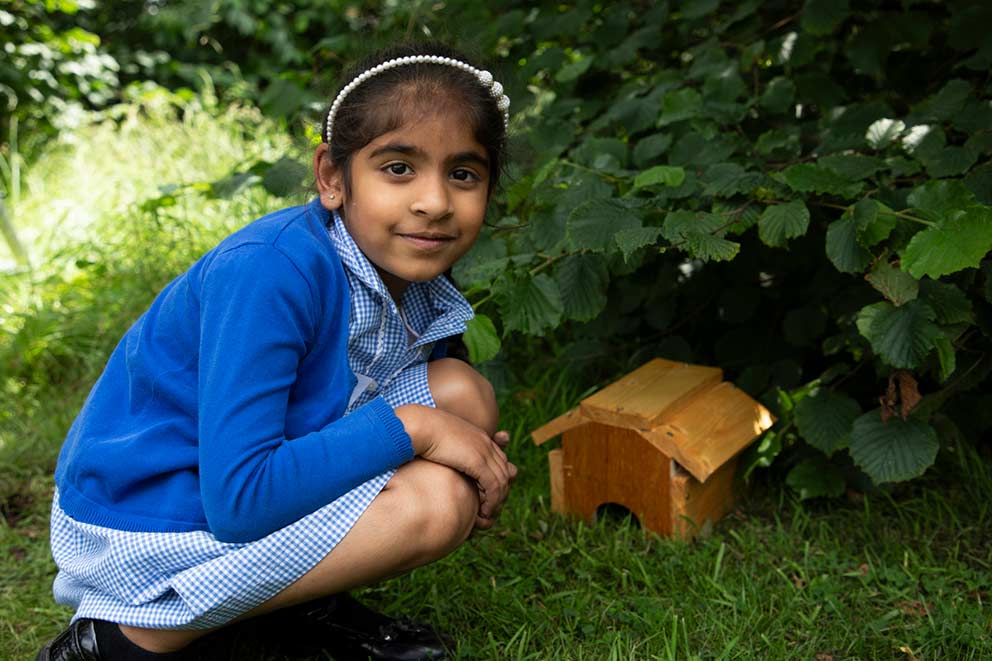
Influence
A strong majority (84%) of the public believes animal welfare should be protected by legislation, with 64% stating that the government should be responsible for ensuring animal welfare is protected. However, despite this support, only 4% have actively written to their local MP or government official to advocate for stronger animal welfare measures.
Cruelty is going viral
The number of adults who have witnessed animal cruelty in the past 12 months is at an all-time high at 42%. Figures are higher among younger people, with 55% of 18–24 year olds and 60% of 16–17 year olds having witnessed animal cruelty. Most commonly, adults witnessed animal cruelty on social media (26%) and in a documentary or on reality TV (19%). Nearly one-third (30%) of people have witnessed animal cruelty online (including social media), with figures higher among younger age categories (46% of 18-24 year olds).
Facebook is the social media platform where the majority of people have witnessed animal cruelty (42%), which is consistent with previous years’ results, however an increasing number have witnessed animal cruelty on Instagram (18%), making it the second most common platform for viewing this behaviour for the first year.
Figure 7: Where adults have witnessed cruelty
Children are also witnessing more animal cruelty
Alongside the increase in adults witnessing animal cruelty, there has been a significant rise in the number of children and young people seeing such incidents. The figure has grown from 33% in 2024 to 37% in 2025. Most children have observed cruelty on television or in films (22%), but have also seen it on social media (16%) and in real life (14%).
The 13–15 age group was particularly affected, with 45% of them witnessing animal cruelty, the highest number among all age groups. Children who live in London were the most likely to have witnessed animal cruelty (53%), with those who live in the East of England being least likely (19%).
Figure 8: Where children have witnessed animal cruelty (by age)
Young voices shout louder
When it comes to reporting animal cruelty, 21% of adults took action, either by contacting the police, Ofcom, or reporting it online. A significantly higher 58% of children and young people reported the incidents, such as to their parents or teachers or online. This demonstrates a notable difference in how the two groups respond to witnessing animal cruelty.
Lending a helping hand for animals
The public’s commitment to animal welfare is evident, with 77% believing individuals are responsible. This belief is further reflected by the growing concern for animal welfare, as 50% of adults feel it’s an important issue for the country. Additionally, 80% of respondents have taken action to help animals in the past 12 months, showing a rise in individual involvement since last year. People are most likely to have fed the birds (48%).
While 27% of respondents stated they wouldn’t be influenced to volunteer for animal rescue centres or charities, the majority expressed potential interest if circumstances allowed. A notable 31% said they would consider volunteering if they had more free time.
Keeping the next generation informed
Just over one-quarter of adults (27%) see improving animal welfare education in schools as an important issue. However, the benefits of teaching animal welfare are almost universally acknowledged, with 91% of people agreeing on its value. The majority believe it helps pupils understand the impact of their actions on animals (74%), a view that has grown in recognition over the years.
Additionally, teaching animal welfare is seen as a way to help pupils become better future citizens (42%) and increase compassion for people (11%). Both of these views have seen a significant increase since 2024. However, the benefit of teaching students to care for animals has seen a 2% decline from 2024.
For children and young people, their main sources of information about animals are parents (65%) and teachers (49%), but friends (45%), books (48%), search engines (34%), and memes and animal videos (33%) also play a role. Popular figures such as David Attenborough and Steve Backshall continue to inspire the younger generation when it comes to animal welfare.
Figure 9: Benefits of teaching animal welfare in schools
Kindness Index Reality Check: Role models
The results
We want to see the ‘establishment of supportive role models’ recognised in attitudes and real life. Our findings from the Animal Kindness Index survey resulted in an ‘attitudes’ score of 3.5 out of 5 for this goal, and our analysis of real-life data scored 3.7 out of 5. Attitudes have stayed the same as in 2024, however, the reality score has increased (from 3.3/5).
What we found out
Public demand for stronger government action on animal welfare is clear. 64% believe that the government should take responsibility, 13% have taken part in a campaign to improve animal welfare in the past 12 months, and 91% support animal welfare education in schools. And with 30% of people having seen animal cruelty online, both government and public figures have a vital role to play in raising awareness and setting an example.
Key legislation was introduced in 2024, including the Animal Welfare (Livestock Exports) Act, the Pet Abduction Act, and the Welfare of Farmed Animals (Scotland) Amendment Regulations. While this is encouraging, mentions of animal welfare in UK, Welsh, and Scottish parliaments dropped by 15% from 2023, showing the need for sustained political focus.
Role models analysis method
-
For role models, our attitudes analysis looked at:
- the percentage of people witnessing animal cruelty online (30%);
- people who believe governments should have more responsibility for animal welfare (64%);
- those who have taken part in a campaign to improve animal welfare (13%);
- people who see the benefits of animal welfare being taught in schools (91%).
-
Reality-wise, we looked at:
- the presence of government legislation and actions around animal welfare, for all animals;
- the number of times ‘animal welfare’, ‘RSPCA’ and ‘SSPCA’ were mentioned in parliamentary sessions (including debates);
- the number of government petitions and debates targeted at animal welfare that were live in 2024.
Overall, there was strong support for role models, such as governments and schools, leading by example on animal welfare. Both the comparison between attitudes and reality reflected a shared view on the positive influence of these role models.
Connected to nature
As a nation, we’re becoming increasingly worried about the future of wildlife, both across the UK and internationally. It’s clear that we recognise that the future of animals, particularly wildlife, is intrinsically linked to our own future.
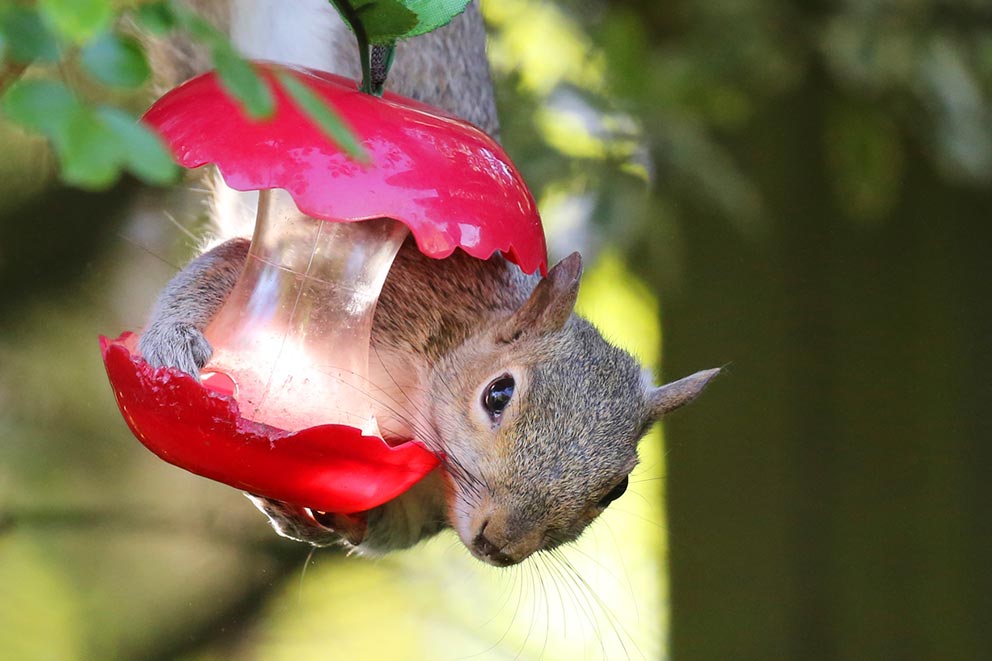
Wildlife is top of the list
In 2025, protecting wildlife has emerged as the top priority for the RSPCA, with 61% of respondents identifying it as the most important issue to address. This marks the first time that wildlife protection has come higher than the importance of properly caring for pets, which now stands at 59%. For children and young people, their priorities remain consistent with 2024. The majority still view helping people care for pets properly as the RSPCA's most crucial responsibility (42%), followed by wildlife protection (28%).
Figure 10: Priorities for the RSPCA
Increasing concern for wildlife and the environment
The 2025 Animal Kindness Index has seen an increased love for animals compared to previous years, particularly wildlife.
Concern for the future of wildlife is high, with more people worried about global (78%) and UK wildlife (73%) than in 2024. Concern for UK wildlife has risen notably from 69% in 2024, reflecting the surge in support for wildlife protection seen throughout the survey. Young adults, particularly those aged 16–17 (84%) and 18–24 (82%), show the strongest concern about the future of wildlife worldwide compared to other age groups. This suggests that younger generations are especially attuned to the threats facing wildlife and are more likely to advocate for measures to ensure its protection. This growing concern across the population, especially among the younger demographic, is an encouraging sign that public awareness of and support for wildlife protection continues to gain in strength.
Strengthening our love for wildlife in law
The 2025 survey reveals a strong public desire for wildlife protection across both rural and urban areas. A significant 96% of respondents believe it is important for wildlife to be protected through legislation or regulation in the countryside, while 92% feel the same about protecting wildlife in towns and cities. As in previous years, a greater emphasis was placed on the importance of protecting wildlife in the countryside. However, both urban and rural wildlife protection have gained in importance since 2023. Despite this growing concern for wildlife, there appears to be a disconnect when it comes to advocating for stronger legal protections. Only 37% of people now view improving legislation for wildlife as a top priority, a decline from 40% in 2024. This suggests a gap between the public's concern for wildlife and their support for legislative action.
However, both urban and rural wildlife protection have gained in importance since 2023. Despite this growing concern for wildlife, there appears to be a disconnect when it comes to advocating for stronger legal protections. Only 37% of people now view improving legislation for wildlife as a top priority, a decline from 40% in 2024. This suggests a gap between the public's concern for wildlife and their support for legislative action.
Figure 11: Concerns about wildlife in the UK and globally
From concern to clean-up
The 2025 results show a strong sense of concern among the public about the impacts of litter, with 95% of people acknowledging its harmful effects. The main concerns are the pollution of waterways (45%), the danger to wildlife from consuming or getting trapped in litter (43%), and the unsightliness or visual pollution caused by litter (35%). However, despite these widespread concerns, a disconnect remains between public attitudes and behaviours. While there has been a slight increase in the number of people taking part in litter picks (rising from 12% in 2024 to 13% in 2025), this still represents a small proportion of the large number of individuals who are concerned about the issue.
On a more positive note, 40% of children and young people have taken action by picking up litter or taking it home to prevent harm to animals, highlighting that the younger generation has a more proactive stance towards protecting wildlife. These figures suggest that while public awareness of the issue is high, translating concern into action remains a challenge.
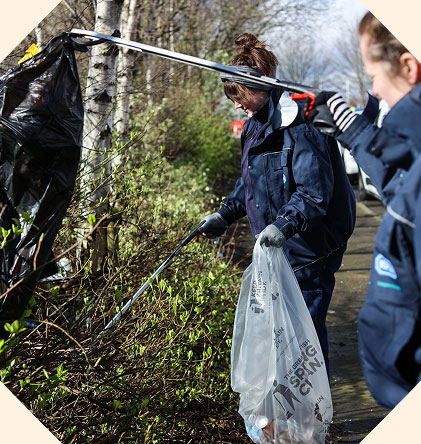
Do we know how to help wildlife in need?
Over one-third of respondents have found sick, trapped or injured wildlife in the UK (38%), with an impressive 93% of those individuals taking action to help, including through attempting to help the animals themselves or reaching out to organisations such as the RSPCA or local wildlife charities. Of those who hadn’t found sick, trapped or injured wildlife in the UK, 54% said they wouldn’t feel confident about helping wildlife in those situations, highlighting a knowledge gap among a large proportion of the nation.
This lack of confidence was highest in the North East, where 60% of adults reported feeling uncertain about knowing how to help. While many are willing to help, there’s a clear need for more education and resources to give people the confidence and skills needed to help animals in distress.
Kindness Index Reality Check: Connected to nature
The results
To assess our connection to nature, we set the goal that ‘actions are taken to promote animal welfare and kindness’. Results from the survey scored 4.3 out of 5 for this goal, while our analysis of real life data was 3.3 out of 5. Both scores are unchanged from 2024.
What we found out
Concern for UK wildlife is rising, with 73% of people worried about its future (up 4% from 2024) and 74% recognising its link to human survival. Yet engagement in environmental efforts is mixed: participation in the Great British Spring Clean fell by 2%, while the Great British Beach Clean saw an 8% rise.
RSPCA volunteer numbers grew by 8% in 2024, with nearly 5,000 people across the UK supporting wildlife and animal welfare efforts. From creating wildlife corridors to aiding campaigns and pet food banks, their contributions are driving positive change, and we aim to build on this momentum.
Connected to nature analysis method
-
For connection to nature, our attitudes analysis looked at:
- the recognition that there are links between wildlife and human futures (74% believe that they are linked);
- the importance of protecting wildlife through legislation and regulations in towns and cities and the countryside (an average of 94% believe this is important);
- public worries (73%) for the future of wildlife in the UK.
-
Reality-wise, we looked at:
- the presence of government legislation and commitments for wild-animal welfare;
- involvement in community litter picks;
- RSPCA wildlife volunteer numbers.
Attitudes towards nature all scored highly, showing that being connected to nature was a priority for the UK public – although attitudes outperformed reality.
Conclusion and recommendations
The 2025 Animal Kindness Index highlights a growing compassion for animals across the nation, with 71% of adults and 89% of children and young people identifying as animal lovers, pointing to a brighter future for animal welfare.
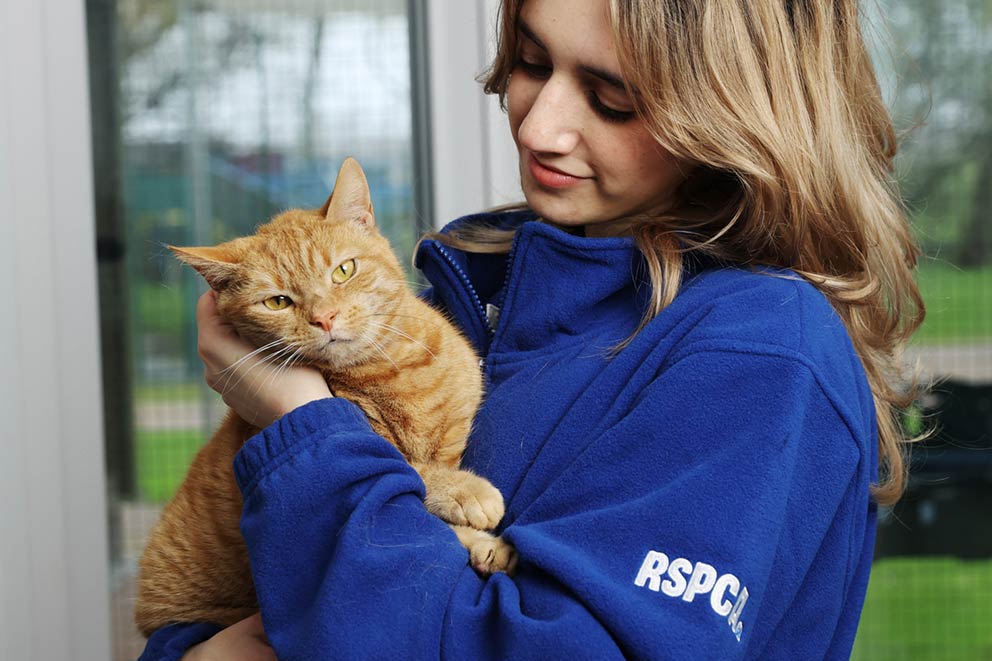
Public awareness of animal welfare remains high and many want to see animal welfare continue to be prioritised, both through their own actions and by other key stakeholders such as the government and animal welfare charities and organisations. However, the report also highlights that ongoing challenges around animal welfare issues still exist, such as the need for greater understanding of animal sentience, the gap between concern for wildlife and support for stronger legal protections, and the financial pressures of pet ownership.
By shining a light on these insights, the RSPCA aims to inspire continued action, education, and policy change, building a kinder, more compassionate future for all animals.
The key conclusions we have seen in this year's Animal Kindness Index are as follows.
Conclusion one
Concern for wildlife and the environment is increasing
Protecting wildlife is the UK public’s top animal welfare priority for the RSPCA to address. However, despite this growing concern for wildlife, 54% of adults who have not previously found sick, injured or trapped wildlife say they wouldn’t feel confident about helping them.
What we can do
We are encouraging people to learn how to help small wildlife who are sick or injured, primarily by taking the animal directly to a vet, as this is the fastest way to get them the care they need. Our ‘Become a Local Animal Hero’ video is a toolkit to empower the public to help wildlife themselves.
Meanwhile, our wildlife centres continue to rehabilitate and release thousands of animals each year. We are also actively campaigning against trail hunting, snares, and the badger cull. We aim to inspire people to protect wildlife in their communities by becoming Wildlife Friends, and we’re calling for stronger legal protections through new wildlife legislation.
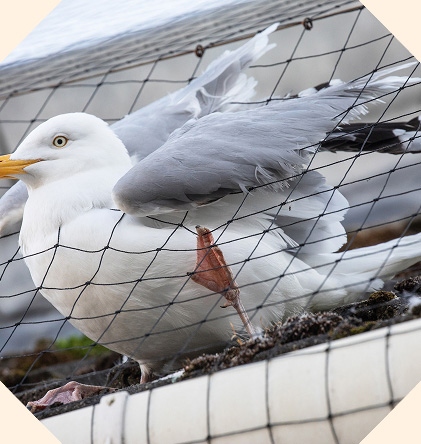
Conclusion two
The public is witnessing animal cruelty more year on year
42% of adults and 37% of children and young people have witnessed animal cruelty in the past 12 months.
What we can do
Our key priorities include not only preventing cruelty but also preventing exposure to cruelty. Our rescue teams work on the ground 365 days a year to prevent cruelty and neglect, while our education teams help raise awareness about how to respect animals. We have successfully campaigned to get animal cruelty included in the Online Safety Act 2024, which contains laws against sharing animal cruelty online.
conclusion three
Financial pressures for pet owners have begun to ease
We have seen a decrease in pet owners taking action due to these financial worries. Despite this, worries about affording pet vet bills are at an all time high.
What we can do
We continue to offer advice and support on our online cost-of-living hub and through our food bank scheme, which has delivered more than 2 million meals to pets in need since it opened in 2020. Our Inspectorate offers vet vouchers to support people struggling to care for their pets.

Conclusion four
The large majority of adults feel it’s unacceptable to breed animals with genetic health problems and extreme body shapes
But younger generations are less likely to feel this way.
What we can do
Our Save Our Breath campaign continues to raise awareness of the health problems, particularly breathing difficulties, faced by brachycephalic pet breeds such as pugs, French bulldogs and Persian cats. We want the public to reconsider purchasing these breeds and consider alternative breeds that have a lower risk of health problems. The campaign also seeks to address issues and raise awareness about selective breeding for extreme features.
Conclusion five
Fewer people are reflecting the growing concern for animal welfare in their buying habits.
What we can do
We announced in our food and farming strategy that we want to drive a significant reduction in the number of animals farmed by encouraging the public to reduce the amount of animal products they eat and encouraging people who choose to eat meat, eggs and dairy to choose higher welfare products. We will continue to campaign for mandatory labelling on products and will lobby for our higher welfare standards to be protected in all future trade deals.
We will continue to advocate for farm practices that move away from lower welfare agricultural practices, calling for an end to cramped farm cages and the use of fast-growing broiler chickens. We will also work towards a significant reduction in the number of animals farmed by encouraging people to Eat Less, Eat Better: to eat less meat, eggs and dairy, and to choose higher welfare RSPCA Assured animal products when they do eat them.
The Kindness Index: Reality Check
According to The Kindness Index: Reality Check metrics, the UK’s attitudes around kindness are largely directed towards pets and wildlife, but the reality tells a different story. Consumer behaviour towards farm animals remains the least progressive in terms of animal welfare, and the public’s actions around nature and wildlife often fall short of the expectations (‘attitudes’) shown in the survey.
Overall, attitudes scored 3.8 out of 5, while actual behaviours scored 3.1. Attitude scores haven’t changed since 2024’s Reality Check, however the overall score for actual behaviours has increased from 3 out of 5. While it’s perhaps not surprising that we see ourselves as kinder to animals than we are in practice, these scores make it clear that there’s still important work to be done. It will require renewed effort across all areas to promote more compassionate behaviours and stronger commitments to animal welfare – to strengthen the UK’s ‘animal lover’ identity and newly prioritised care for wildlife for behaviours as well as attitudes.,
Footnotes
Footnote 1 and 2: https://www.pdsa.org.uk/media/14944/pdsa_paw-report-2024.pdf
About the research
The 2025 Animal Kindness Index is the fourth in this series. The report from the RSPCA, Scottish SPCA and Ulster SPCA examines the responses of more than 7,000 people aged 7+ to understand how the UK population thinks about and feels and acts towards animals and animal welfare.
YouGov online surveyed a total of 6,272 UK adults (aged 16+) between 24 March and 11 April 2025, and 1,188 children (aged between 7 and 15) between 17 March and 3 April 2025. The results have been weighted separately across both surveys to be representative of the UK population. Data referenced from the adults’ survey is based on the responses from those aged 18+, which was a total sample size of 6,103 unless stated otherwise. When comparisons are made with previous years, it is done on the basis of respondents aged 18 and over.
In addition to the survey results, we looked at people’s behaviour by analysing Google search data, and drew on resources across the RSPCA, Scottish SPCA and Ulster SPCA, to produce The Kindness Index: Reality Check. The Reality Check is an additional layer of analysis that compares our findings from the Animal Kindness Index survey results (‘attitudes’) to ‘real-life data’, for example, TV programme viewing figures and the presence of government actions and legislation (‘realities’). We do this through a series of indicators and scoring criteria that contribute to goals for each of our identified themes. Each criterion is scored out of a maximum of five points, and these are then averaged to create the overall goal score for both the attitudes and realities. The Reality Check measures whether the actions of individuals truly represent their intent and, if not, where we need to make improvements.


